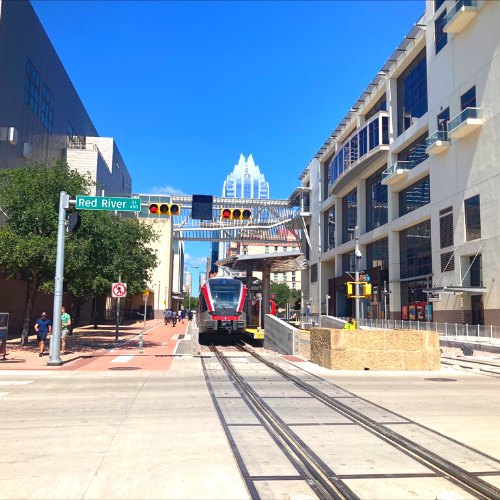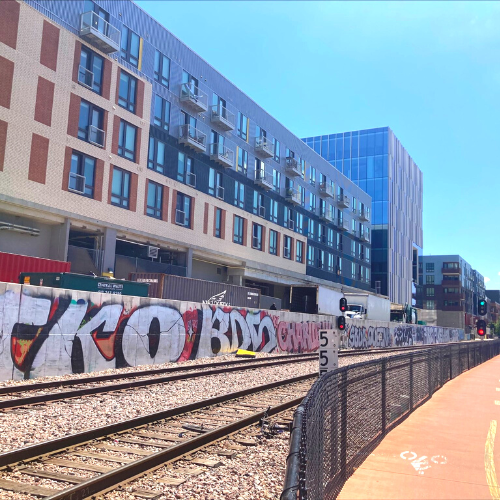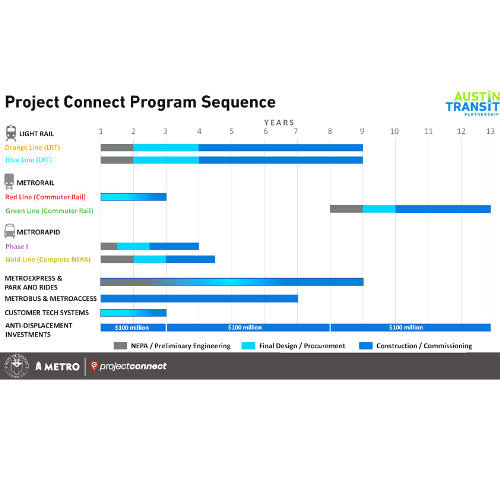Image Courtesy: pcon-servicelevelmap-jun202003.pdf (projectconnect.com)
Estimated Project Cost
The estimated cost of Project Connect is approximately $7.1 billion, which includes funding for the design, construction, and operation of the new transit system over the next decade. The majority of the funding will come from a local tax increase and federal grants, with additional funding from other sources, such as private investment and fares from riders.
Impacts and Challenges
Despite the potential benefits of Project Connect, the proposal has faced criticism from some residents and community groups. Some opponents argue that the project is too expensive and that the tax increase needed to fund it will place an undue burden on low-income residents. Others have expressed concern about the potential impact of construction on local neighborhoods and businesses.
In addition to these criticisms, Project Connect also faces several technical and logistical challenges. One of the biggest challenges is the complexity of the project, which involves the construction of multiple new rail lines, bus routes, and stations. This will require extensive planning, coordination, and communication with local stakeholders and community groups.
Another challenge is the need to secure sufficient funding for the project. While the majority of the funding for Project Connect is expected to come from local tax revenue and federal grants, there is still a risk that funding could fall short, which could delay or jeopardize the project.
Despite these challenges, the potential impact of Project Connect on real estate development in Austin is significant. The new transit system is expected to improve access to jobs, education, and healthcare, which could attract new residents and businesses to the city. This could lead to increased demand for housing and commercial real estate in areas near transit stations, which could drive up property values and spur new development.
Overall, Project Connect represents a bold and ambitious vision for the future of public transportation in Austin. While the proposal faces significant challenges and opposition, its potential to improve mobility, reduce traffic congestion, and promote sustainable development make it an important initiative for the city and its residents.
Here are a few additional links for further reading and insight:





